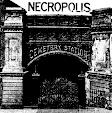ON THE TWENTY-SIXTH NIGHT OF HALLOWEEN … I watched The Burning (1981), a golden-age slasher directed by Tony Maylam. So, there’s this mean old groundskeeper at a sleepaway camp (what they call summer camps around New York, I guess), name of Cropsey. Some boys decide to play a prank on him, see, but the prank goes wrong, and Cropsey gets horribly burned. Hospital workers treat him like a sideshow attraction, and ladies of the night refuse his service. So what does he do? He vows revenge and goes back to the woods to kill this year’s campers with a giant pair of garden shears!
The Burning is steeped in urban legend. It features counselors at campfire circles relating the actual New York legend of Cropsey with great relish. The early scenes in particular are saturated with exploitative nostalgia for things city kids whisper in the dark to scare each other.
I’m a bit perplexed by the Cropsey mythos, however. Not having grown up with it, from what I can gather online the signature elements are: (1) Cropsey escaped from a mental institution (possibly on Staten Island), where he had been put away for murdering his family; (2) he has a hook for a hand; and (3) he lives in the woods and murders camping children. The Burning’s Cropsey only retains (3), differing from the standard version in both origin and appearance.
A great documentary from 2009 called Cropsey searches for the kernel of truth behind the Cropsey tale. The filmmakers, who had grown up with the tale as kids, conclude that this kernel resides in a man named Andre Rand. Rand had worked as a janitor at a Staten Island mental institution for children called Willowbrook. Upon Willowbrook’s closure, Rand became homeless and shortly thereafter began abducting and murdering children in the nearby woods. He was finally caught and convicted in 1988. Revisiting all of this now in light of The Burning, for which the initial treatment was written in 1979, I wonder how Andre Rand could have inspired the legend of Cropsey after all. The timeline doesn’t seem to match up. Even if The Burning’s writers first heard the tale in their late teens, it must have been circulating by the early 70’s, before Rand’s crimes. Given how different the version told in The Burning is, it seems that the elements inspired by Rand must have been added onto a preexisting legend, after it had already been around for at least a decade, rather than Rand serving as the primary impetus for Cropsey. Then again, I wonder how much The Burning itself served to synthesize disparate tales under the “Cropsey” rubric. Clearly, more research is needed.
Back to the movie. After a fertile and taut opening, The Burning slackens quite a bit and turns into a summer camp teen romp for the duration of the second act (the main highlight of which is a pre-George Costanza Jason Alexander), until the slashing starts in the last half hour. These scenes of stalking and stabbing in the woods and an abandoned mine are soundly made, with some excellent gore effects by splatter-master Tom Savini, but they aren’t particularly groundbreaking. The Burning was scooped by Friday the Thirteenth on taking the genre to the woods, and honestly, Friday the Thirteenth handles this aspect better by infusing the woods with an atmosphere of haunting echoes. The Burning’s woods are just a place where kids do camp activities and get stabbed. However, again, I thoroughly enjoyed the nostalgic urban legend framing, so depending on your interest in the tragedy of Cropsey, it may be worth your while.


No comments:
Post a Comment